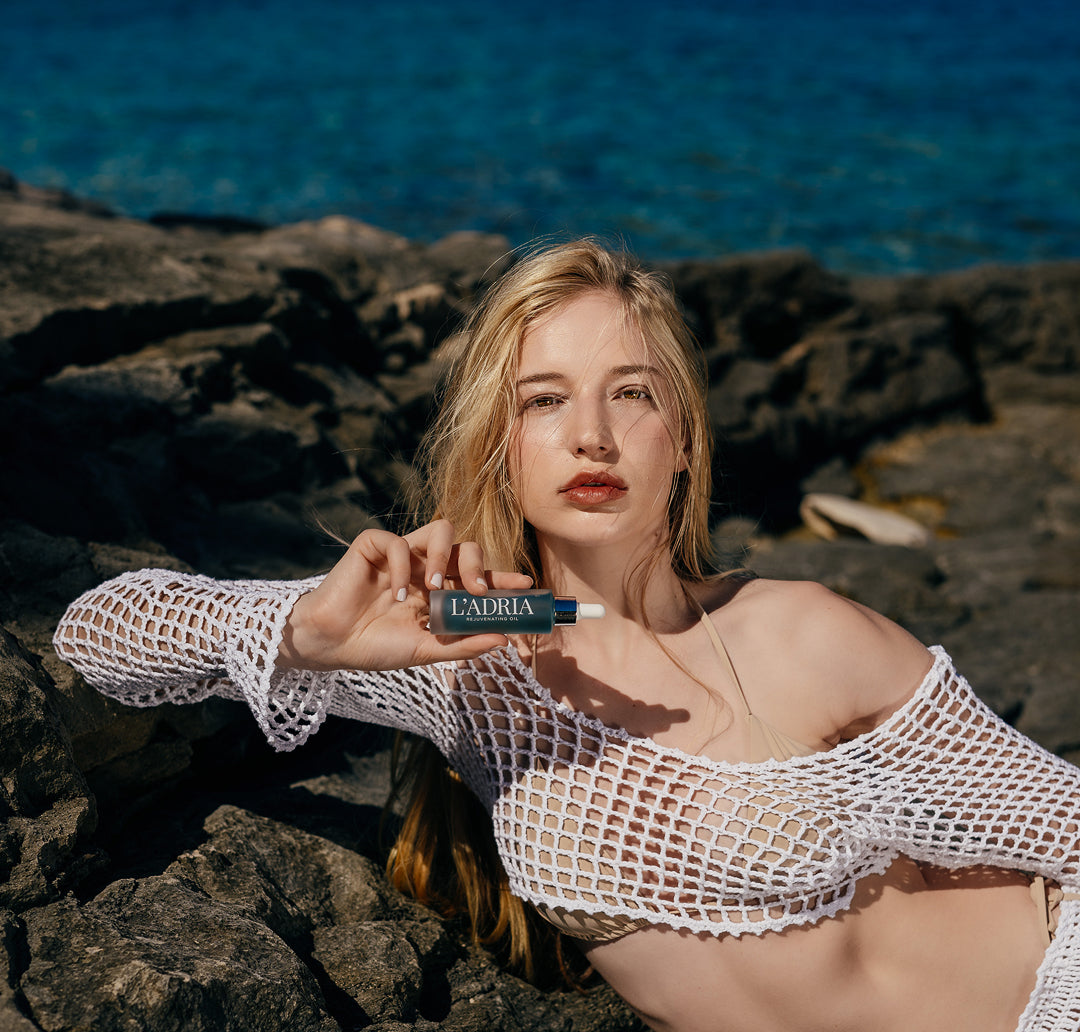Hyperpigmentation: Everything about the most common skin problem of women after summer
10/05/2023

Cocktails, enjoying on the beach, after beach parties and good company - isn't that the only point of summer?!
In the summer, we like to be relaxed and carefree, so sometimes it happens that we forget about the rigorous skin care routine that we follow at home, and that includes forgetting about the protective factor.
A mix of circumstances, excessive exposure to the sun and lack of protection leads to the appearance of small spots that just don't seem to leave your face.
And you're right - hyperpigmentation is resistant and very annoying to treat, but if you don't devote yourself to it, you'll probably get rid of it in six months to a year!
WHAT IS HYPERPIGMENTATION?
The term hyperpigmentation refers to the darkening of skin areas and freckles caused by the sun, melasma or after acne.
Freckles can appear anywhere on the body and can vary in size, but the most noticeable are those on the face. Hyperpigmentation occurs when melanin, the pigment that gives our skin its color, is overproduced.
Furthermore, about 1/3 of women are at a higher risk of hyperpigmentation and, although it is harmless, it can give the impression of unsightliness and add years to your appearance.
The sun's radiation (UVA and UVB rays) and visible light cause the accumulation of melanin in certain areas of the skin, and in order to avoid this - it is necessary to carry out an adapted care routine in a disciplined manner.
AS WE ALREADY MENTIONED, THERE IS A DIFFERENCE BETWEEN SUN FREQUENCY, MELASMA AND POST-INFLAMMATORY HYPERPIGMENTATION:
1. Sun freckles are small darker spots like dots on the skin, often appearing on the face, décolletage and hands.
2. Freckles from melasma are larger freckles that are most common on the face and are common among women; it is thought to occur when the female hormones estrogen and progesterone stimulate excessive melanin production when the skin is exposed to the sun and occurs in 10-15% of pregnant women and 10-25% of women taking oral contraceptives.
3. Post-inflammatory hyperpigmentation occurs when a skin injury or trauma heals and leaves behind a flat area of discolored skin, and is a common occurrence in patients who have suffered from acne, atopic dermatitis or psoriasis, but it can also be caused by cosmetic procedures such as dermabrasion, laser treatment and chemical peels.
ALTHOUGH THE SITUATION IS COMPLICATED, HYPERPIGMENTATION CAN BE RESOLVED IN THE FOLLOWING WAYS:
1. Reduce sun exposure and apply sun cream with an SPF of 30 or more.
2. Avoid touching and removing acne, scabs and other irregularities on the skin - you risk the appearance of a scar or spot.
3. Use products with vitamin C; it solves a lot of skin problems, from textures to fine lines, and as an ingredient, it can lighten darker areas and reduce discoloration and initiates natural skin regeneration. Also, it is good to take it orally in parallel for its antioxidant effect and internally.
4. Use retinol; this type of vitamin A accelerates the exchange of skin cells and penetrates deep into the skin where it affects the production of pigment in the skin and treats dark areas and freckles that have not yet reached the surface. Of course, with a handful of other benefits it has!
5. Use azelaic acid and kojic acid; these ingredients brighten the appearance of the skin.
6. Try the new L`Adria Brightening perfecting serum . It helps lighten and soften hyperpigmentation spots, even out the complexion and restore the skin's natural glow.
It is especially suitable for mature skin with pigmentation spots caused by photoaging, but also for youthful skin prone to post-pimple spots that fade slowly (PIH). 
7. Try specialized cosmetic treatments; laser therapy, intense pulsed light, chemical peeling or microdermabrasion.
8. Natural options: Aloe vera, licorice and green tea are some of the ingredients that you can use at home to reduce the appearance of skin hyperpigmentation, but the skin recovery process will be much slower.
Holiday Offer









